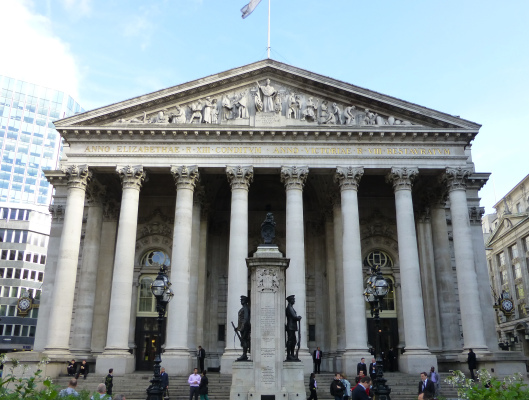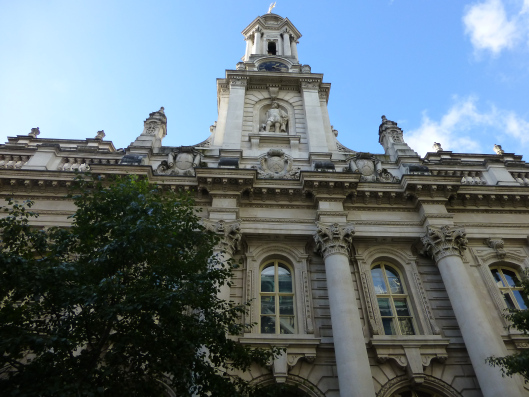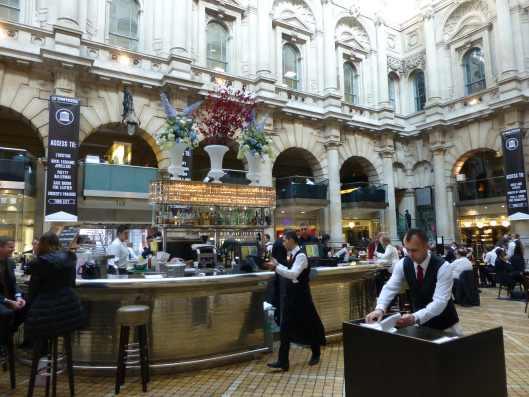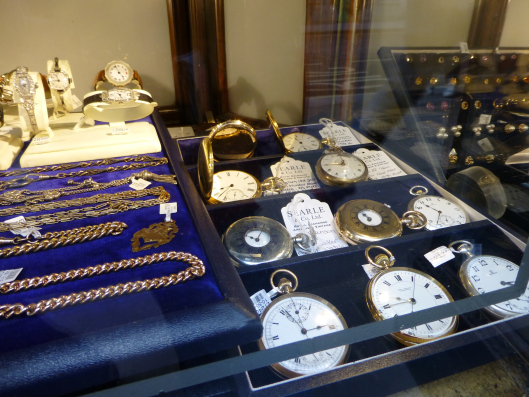Tags
breakfast spot, Central London, drink, eat, landmark, tea, World War II
Right in the very heart of the City is the Royal Exchange. A wonderful building, with a great history that is as vibrant today as it ever was. While maybe not one would expect for a topic on a site that focuses on ‘London Off The Beaten Path’ I find that many people do not know the history of this building and others think it is still a stock exchange or part of the Bank of England. With many visitors to London spending most of their time in the West End, it is worth reminding people that for its history, its shops and its restaurants, a trip to the Royal Exchange is well worth it. Sitting at the Grand Cafe, with a cocktail or glass of champagne in hand, while enjoying the ambiance of one of London’s most magnificent buildings is an experience not to be missed.
History: The building of the Royal Exchange was first completed in 1565 and in 1571 it received its ‘Royal’ title and obtained a licence to sell alcohol from Queen Elizabeth. It was the vision of Thomas Gresham who wanted a central facility for commerce in the City of London to mirror that of the Bourse in Antwerp. The original bell tower summoned merchants at 12 noon and 6pm to come and trade. Gresham realized that it would be hard for him to make money solely by facilitating a place for trading, so he built two floors of retail shoppes - about 100 kiosks in all - that paid rent to him creating a profitable business. In effect, he had built the world’s first shopping mall.
This original building was destroyed in 1666 during the Great Fire. Within 3 years it was rebuilt. While stock traders certainly used this facility (in addition to coffee houses) they were expelled from the Royal Exchange in 1698 due to their rowdy behaviour. Insurance traders, including those from Lloyds, did business here and stock brokers became regulated through licences - which started to create the basis of an organized stock market. This new building survived until 1838 when fire again ravaged the building. In 1844 the third iteration of the Royal Exchange was opened by Queen Victoria - the structure we see today. This rebuilt structure now had a roof that covered what used to be an open courtyard.
The building started trading stocks again in January 1845. When WWII started in 1939 trading at the Royal Exchange was suspended for about 9 months. During the war the building was a survivor, escaping the damage inflicted by the Blitz. By 1972 all stock trading left the building as the London Stock Exchange had its new premises opened by Queen Elizabeth II.
The most recent renovations were in the 1980s when the roof was restored and two floors of new offices were added, and in 2001 when it was extensively remodelled by architects Aukett Fitzroy Robinson, resulting in the addition of new boutiques and restaurants.
For a brief period of 9 years in the late twentieth century, the Royal Exchange reverted to its use as a centre for financial trading as the home to the London International Financial Futures Exchange (LIFFE).
Today: The Royal Exchange is to some degree back to the way it once was - a shopping mall - though a very upscale one. The shops are open from 10-6, though some restaurants open at 8am and stay open until 11pm. In the centre of the courtyard is the Grand-Cafe, with its oval bar, and all day dining. You can make reservations for breakfast, but otherwise its no reservations. On the mezzanine level of the Royal Exchange is Sauterelle a more upscale French restaurant with a great view over the Grand Cafe and central courtyard. Shops include sellers of watches, art, clothing and antiques, among others - most are generally considered ‘high end’.
Located at: Royal Exchange, EC3V 3LR
Closest Tube: Bank






True, I ‘ve spent too much time in the West End and I’ve missed many interesting things and places, that’s why I follow you. Many thanks.
Hi drunkenness, thanks for your comment. I’m glad you’re finding some new ideas for things to do in London, all the best, Ian.
Memories. My Husband worked their when I first me him! x
I hope you go back for a celebratory drink then.
Thanks for info on this building. I always think of it as one of those ‘power’ buildings of London. It sits neatly next to the Bank of England, which compliments it in many ways.
Absolutely… it has a very imposing presence.
The Royal Exchange café was on our loooong list to places to go but never heard about the shops there. Thank you for all the information.
You’re welcome… hope you like it when you finally get to go, Ian
What a coincident that I am reading a book about Elizabeth I and the very section about her opening the Royal Exchange! The fact that this city is a full of histories which became influential to the rest of the world makes me love the place even more.
What book are you reading on Queen Elizabeth (and more importantly is it a good one!)?
I am reading Elizabeth the Queen by Alison Weir. I’ve read her Henry VIII and liked it. The book is very enjoyable and keeps me awake till early hours 😉
I didn’t know the history either! Seeing the south entrance I assumed it wasn’t open for the general public, I shall return.
You can enter through the south, north or east / west doors! The inside is great - so do go in next time you are in the area. All the best, Ian
I loved having a drink there. Great place to have a date.
Thanks for your comment - I agree great place for a drink… and for all readwea seeking a place for a date now a suggestion for that too! All the best, Ian
A great place to “window” shop. I had no idea that stock traders were kicked out of this place in its early history for being too rowdy! Love the exchange’s Roman-temple inspired facade.
Thanks for your comment. It is a great facade and a style that was very popular with Victorians.
Fantastic pictures - this is one of my favourite places in the City of London. Also just got around to including your site on blog links. Sorry for the delay!
Very kind of you to share my site… glad you like the Royal Exchange - I do too! All the best, IAN